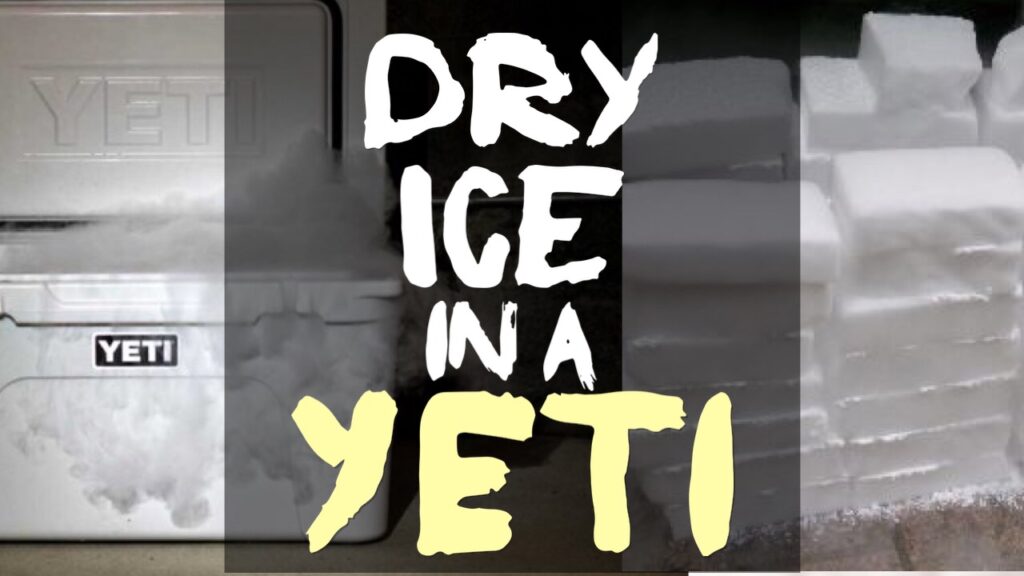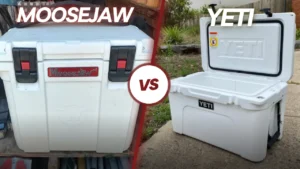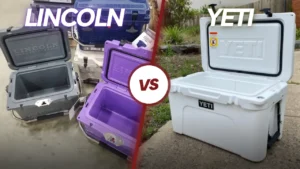There are a lot of ice tests out there showing that Yeti coolers are able to hold ice for 5-10+ plus but there is a lot less information on how long dry ice will last in a Yeti cooler.
While the data out there is limited I was able to do some research and give you some estimated on how long dry ice will last in a Yeti cooler.
Dry ice will last anywhere from 2-7+ days in a Yeti cooler depending on the size of the cooler and how much dry ice you use. 15 lbs of ice in a Yeti 65 will last about 2.5 days but if you filled the same cooler to capacity with dry ice you could expect 7+ days of dry ice retention.
If you have smaller quantities of dry ice then it's best to use a smaller Yeti cooler and if you have large quantities then you'll want a large Yeti cooler. Dry ice can also be used to extend the life of ice in a cooler. Click here to learn more about how to use dry ice in a cooler.
See the latest prices and sizes of Yeti coolers at Amazon
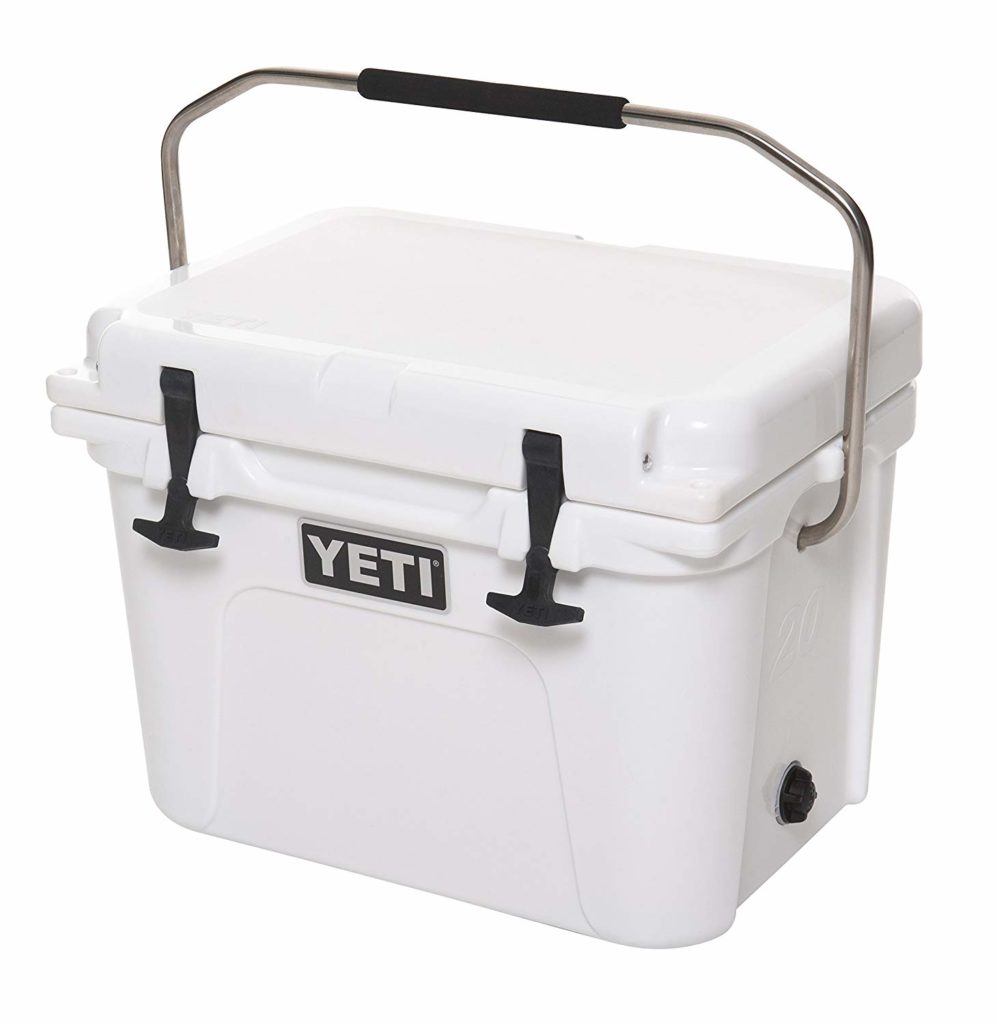
How Long Will Dry Ice Last In a Yeti: Ice Tests
Below you can see an ice test where a small amount of dry ice is used in a Yeti cooler and you can see that the dry ice lasts 2.5 days
In this video the create does say that previously he used 28 pounds of dry ice and it lasted “several days” in the cooler.
I am unsure if this means 3 days, 4 days, 5 days or more but several days I would assume would be between 3-4 days.
Below you can see another YouTube video where someone tests cubed ice vs block ice vs dry ice to see which lasts longer:
In this test you can see that 15 lbs of dry ice lasted 2.5 days.
It's important to note that while the above video used Lifetime 55 coolers these coolers actually have very similar ice retention to a Yeti cooler, so you can assume that a Yeti cooler would have kept dry ice for approximately the same amount of time.
Lifetime coolers are much cheaper than Yeti coolers but perform nearly as well and are actually made in the USA. Read my full Lifetime cooler vs Yeti comparison to learn more and see how side-by-side how these coolers compare to each other.
See the latest price of Lifetime coolers at Walmart
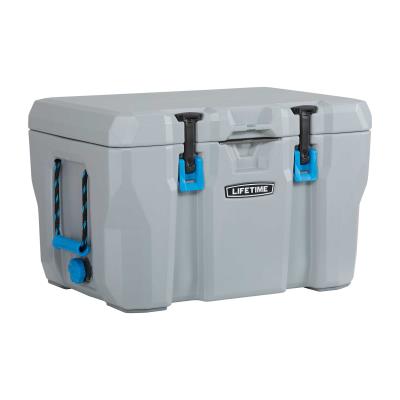
How To Keep Dry Ice Longer In a Yeti Cooler
If you're looking at using dry ice in a Yeti cooler and you want to make that dry ice last as long as possible then these helpful tips will come in handy.
Pre-Chill Your Cooler
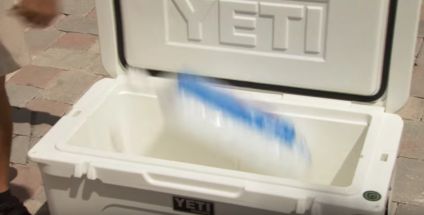
The first step to keeping dry ice as long as possible in your Yeti cooler is to pre-chill your cooler and get it as cold as possible.
Yeti coolers contain thick insulation, which when left at room temperature can actually absorb quite a lot of heat. Adding dry ice to a warm cooler will use up a lot of the dry ice just to bring the Yeti cooler down to temperature.
So pre-chill it first with frozen water bottles, or if you have access to it then pre-chill it using a large deep freezer or by using a sacrificial bag of dry ice.
Pre-Freeze or Pre-Chill Your Items
The same goes for the items you're putting into your cooler. Putting in room temperature drinks, meat or other food will more quickly use up your dry ice.
The goal here is to add as little heat to the cooler as possible. So pre-freeze items before putting them in your cooler or if you don't want them completely frozen then pre-chill them in the fridge.
Use As Much Dry Ice As You Can
The more dry ice you use the longer your dry ice will last overall.
As we saw above a large Yeti cooler with a small amount of dry ice can hold that dry ice for 2-3 days. However, if you were able to completely fill that cooler with dry ice or you were able to use a larger quantity of dry ice then the ice would last much much longer.
Use Larger Blocks of Dry Ice
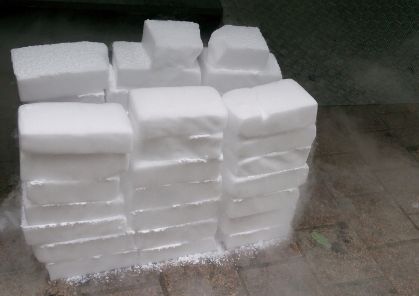
Large blocks of dry ice will last longer than smaller blocks of dry ice.
They have less surface area and thus cannot sublimate (turn from solid to gas) as easily. This means the ice will last longer.
Fill Your Cooler Completely
If you only have a small amount of dry ice then using a smaller Yeti cooler will keep the dry ice longer.
When I did all the research to work out which cooler keeps ice the longest I discovered that filling the cooler as much as possible and having the least amount of empty space increases ice retention.
So if you have a small amount of dry ice use a smaller cooler. If you have a large amount use a larger cooler. But try to fill your cooler up as much as possible.
Other Important Tips When Using Dry Ice In A Yeti Cooler
Dry ice is colder than regular ice and there are some important things to be aware of when using dry ice in your Yeti cooler. Here are a few tips to keep in mind when using dry ice in your Yeti.
Don't Touch The Dry Ice With Your Bare Hands

Dry ice is -109 degrees Fahrenheit and can cause instant frostbite on your skin if you're not careful with it.
Always use gloves or some other protective cloth or material when handling dry ice and be careful not to get it on your skin.
Place Cardboard or Newspaper Over The Dry Ice
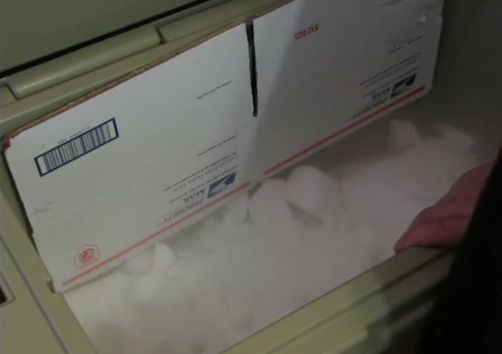
Dry ice is extremely cold and will freeze any food or drinks that come into contact with it. It can also cause freezer burn to meats, making them tough and ruining their taste and texture.
So put a layer of something like cardboard. newspaper or styrofoam between your dry ice and the items inside your cooler.
It's also a good idea to keep drinks raised and far away from the dry ice as even being on the cardboard will likely freeze them.
Allow Room For The Gas To Escape

Dry ice doesn't melt like water ice does, it turns directly into a gas. This is called sublimation.
As dry ice sublimates the gas takes up more space than the solid ice. If you're not careful this expanding gas causes a lot of pressure in your cooler and if the gas can't escape then your Yeti cooler may explode.
This is highly unlikely as Yeti coolers are not completely airtight, even though they have a rubber gasket. So air should be able to escape.
But just to be safe it's a good idea to leave your drainage plug open so the gas can escape or leave the rubber T latches undone so the gas can escape out of the lid without exploding the entire cooler.

